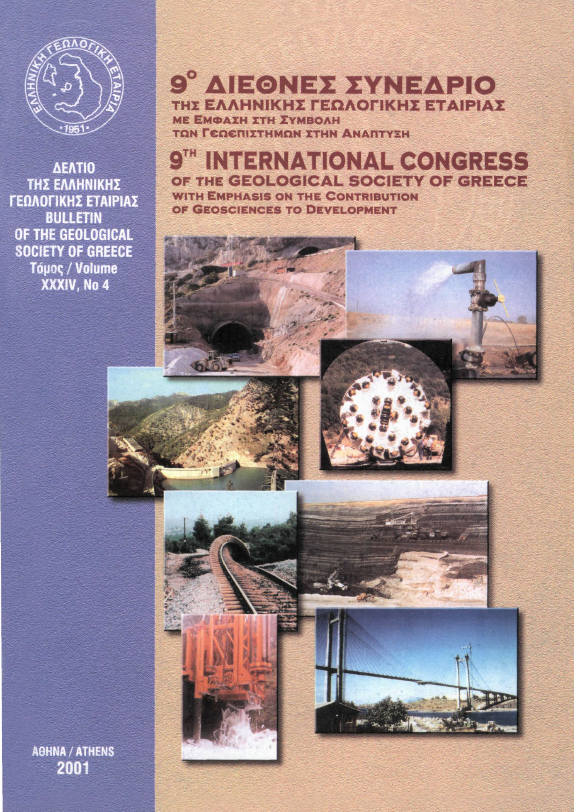Bayesian probabilities for occurrence of large earthquakes in the seismogenic sources of Japan and Phillipine during the period 1998-2017
Περίληψη
Στην μελέτη αυτή γίνεται χρήση της στατιστικής Bayes με σκοπό την εκτίμηση των πιθανοτήτων γένεσης μελλοντικών μεγάλων σεισμών, υιοθετώντας την υπόθεση ότι οι σεισμοί ακολουθούν κατανομή Poisson. Η μέθοδος που χρησιμοποιείται εκτιμά την πιθανότητα υπέρβασης σεισμών με καθορισμένο κατώφλι μεγέθους σε χρονικό διάστημα 20 ετών, δηλ. 1998-2017. Αυτό το κατώφλι επιλέγει να είναι το μέγεθος μεγαλύτερο ή ίσο του Μ=7.0. Οι πιθανότητες που εκτιμήθηκαν με τον τρόπο αυτό μπορεί να θεωρηθούν ότι παρουσιάζουν την σεισμικότητα. Στην συνέχεια με τα αποτελέσματα αυτά χαράσσονται γραμμές (καμπύλες) που παρουσιάζουν την διακύμανση της σεισμικότητας μεταξύ των σεισμογενών πηγών των περιοχών της Ιαπωνίας και των Φιλιππίνων. Οι γραφικές αυτές παραστάσεις, όπου εμφανίζεται η μεταβαλλόμενη σεισμικότητα είναι πολλαπλά χρήσιμες τόσο για θεωρητικούς όσο και για πρακτικούς σκοπούς.
Λεπτομέρειες άρθρου
- Πώς να δημιουργήσετε Αναφορές
-
TSAPANOS, T. M., GALANIS, O. C., MAVRIDOU, S. D., & HELMl, M. P. (2001). Bayesian probabilities for occurrence of large earthquakes in the seismogenic sources of Japan and Phillipine during the period 1998-2017. Δελτίο της Ελληνικής Γεωλογικής Εταιρείας, 34(4), 1619–1624. https://doi.org/10.12681/bgsg.17271
- Ενότητα
- Σεισμολογία

Αυτή η εργασία είναι αδειοδοτημένη υπό το CC Αναφορά Δημιουργού – Μη Εμπορική Χρήση 4.0.
Οι συγγραφείς θα πρέπει να είναι σύμφωνοι με τα παρακάτω: Οι συγγραφείς των άρθρων που δημοσιεύονται στο περιοδικό διατηρούν τα δικαιώματα πνευματικής ιδιοκτησίας επί των άρθρων τους, δίνοντας στο περιοδικό το δικαίωμα της πρώτης δημοσίευσης. Άρθρα που δημοσιεύονται στο περιοδικό διατίθενται με άδεια Creative Commons 4.0 Non Commercial και σύμφωνα με την οποία μπορούν να χρησιμοποιούνται ελεύθερα, με αναφορά στο/στη συγγραφέα και στην πρώτη δημοσίευση για μη κερδοσκοπικούς σκοπούς. Οι συγγραφείς μπορούν να: Μοιραστούν — αντιγράψουν και αναδιανέμουν το υλικό με κάθε μέσο και τρόπο, Προσαρμόσουν — αναμείξουν, τροποποιήσουν και δημιουργήσουν πάνω στο υλικό.



